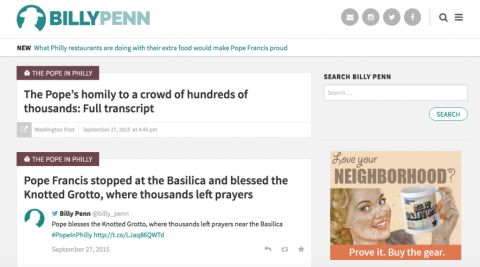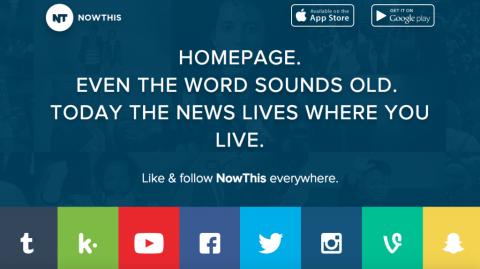The vast majority of your audience is now reading your stories and watching your videos on mobile. So why are YOU reading and watching them on a desktop?
That was one of the messages from experts to journalists who attended the recent Mobile News Summit hosted by the Poynter Institute at the Columbia University Graduate School of Journalism in New York. Several panelists in the day-long summit sponsored by the MacArthur Foundation said that the most important advice for those who want to understand mobile is for everyone — editors, reporters, videographers, ad sales reps — to step away from the desktop at work and see the story the way most audiences are now seeing it, on a device they carry with them at all times.
"At Buzzfeed, you can't publish a story unless you’ve seen it on mobile," said Stacy-Marie Ishmael, managing editor for mobile news there.
"Use your phone all the time for content consumption," added Michael Owen, deputy news editor for The New York Times. "That’s the way it becomes second nature."
This year was the first in which most news in the United States is consumed on mobile devices, said Emily Bell, director of the Tow Center on Digital Media at Columbia. It's also the year in which social media companies became publishers. One in four adults now gets news primarily on Facebook, and one in 10 gets it on Twitter, she said.
Bell, Ishmael, Owen and other speakers at the summit offered tips for news organizations looking to adapt to the shift to mobile.
Tips on shifting to mobile
Break up the silos. Kinsey Wilson, executive vice president of product and technology at The New York Times, suggests setting up "scrum teams" of people from across departments to work on mobile projects. Give them clear autonomy and specific tasks. "Newsrooms are still organized in legacy silos. If you’re going to be successful in digital, you have to cut across those silos," he said.
Speak the same language. "Editorial and development people are not really that different," Ishmael said. "On the editorial side, people say, 'I'm not tech fluent, so I can't be part of the conversation.' But if you have a good development team, you don't even have to use tech words."
Watch how ordinary people use their devices. David Sleight, design director at ProPublica, said his organization does "guerrilla testing" of its products under development on mobile: Bring people in and watch them interact with the product or try to get information. Record them. Fix problems they reveal.
Share mobile metrics with staff on a regular basis. "If they're not getting hit with those numbers every day, they're going to think the wrong way, make the wrong decisions," said Damon Kiesow, head of mobile initiatives at McClatchy Interactive.

Make it quick. You have less than two seconds to serve someone on mobile before you've lost them, Ishmael said. Jim Brady, founder and CEO of BillyPenn, a mobile-first news platform for Philadelphia, advises eliminating section fronts on your mobile app. "The 30 seconds you spend getting through section fronts — you might as well spend that time slamming your head against a brick wall."
Stop annoying your audience. Frustrating users with intrusive ads is like inviting someone to your house, punching them in the face and wondering why they don't come back, Brady said. "When someone comes to your mobile site, are you trying to monetize them for that visit or are you trying to monetize them for a lifetime?" he asked.
Curation is key. Send morning and evening briefings, allowing people to catch up on the day, Wilson said. "It didn’t work on desktop, but it does on mobile because news is with us through the day."
Tailor content to time and place. David Cohn, executive producer at AJ+, said that you should deliver products based on where your audience is likely to be at certain times — short pieces when they're commuting, longer ones when they're home on the couch. Added Allen Klosowsky, VP of mobile and connected devices at SpotX, "Data is about knowing where someone will be tomorrow, not where they're standing right now."
SEO is now SMO. You used to write headlines thinking of Search Engine Optimization. Now, you need to think about Social Media Optimization. Cohn noted that, "On Facebook, you're not writing for your audience — you're writing for your audience's friends."

Use push notifications carefully. Ishmael says that most push notifications are sent to remind people that they have installed your app, not because you're providing them with useful information. It's frustrating for users to follow a push notification and be taken to the home page instead of to the actual story.
Make your content platform-specific. You can't just take a longer YouTube video and edit down to a few seconds for Facebook, said Ashish Patel, senior VP of social media at NowThis, a mobile-only product whose motto is "See it First, Share it First." NowThis has separate content producers for each social media platform, he said.
This post was also published on PBS MediaShift's IdeaLab.
Main image CC-licensed by Flickr via Alexandra E Rust.
Homepage slideshow image CC-licensed by Flickr via Al Case.